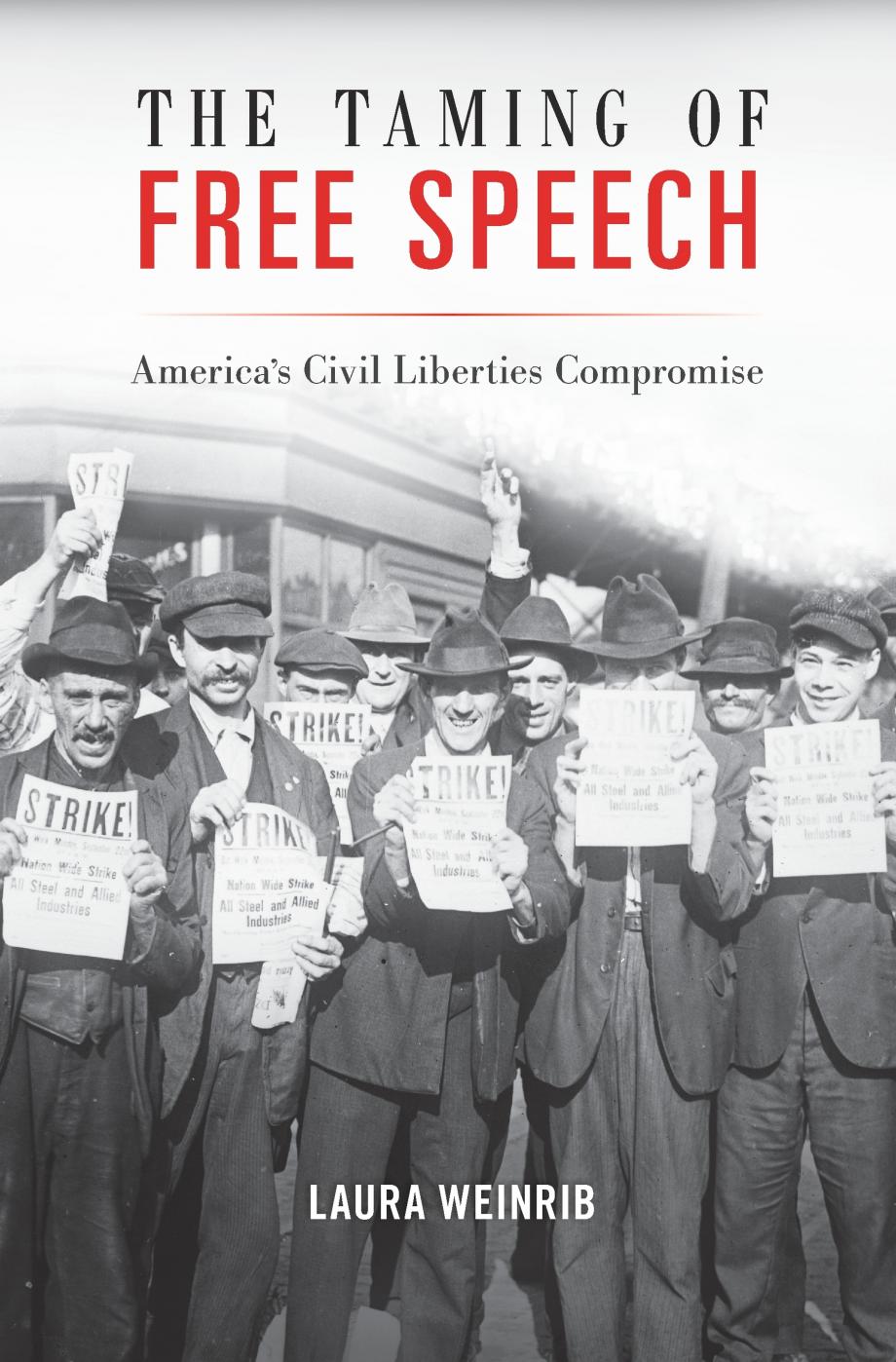The First Amendment’s Radical Roots
Professor Laura Weinrib on Her New Book, "The Taming of Free Speech"

There’s a narrative about the First Amendment that has been amplified by the ongoing debate about the US Supreme Court’s 2010 ruling in Citizens United v. Federal Election Commission, and it goes something like this: the Court’s willingness to extend free speech protections to businesses is new. Depending who’s talking, this “new” direction is either a strengthening of the First Amendment and a win for political speech—or a perversion of our constitutional values and a strike against the “little guy.”
But there’s a problem with that storyline that has hampered analysis of the appropriate path forward, said Law School Assistant Professor Laura Weinrib: the developments aren’t as novel as advocates on both sides of the issue have assumed. The constitutional line between political expression and economic activity blurred long before the Court’s 2010 decision that independent political expenditures by corporations and unions are protected under the First Amendment. In fact, conflict over constitutional protection for business and labor speech is at the very heart of the modern First Amendment, Weinrib reveals in her new book, The Taming of Free Speech: America’s Civil Liberties Compromise (Harvard University Press).
“The celebrated protagonists of the Supreme Court’s First Amendment decisions are the civil rights demonstrators and political protestors who braved public hostility to express their controversial ideas,” Weinrib said. “But the early architects of the modern First Amendment, the individuals and organizations most responsible for our powerful constitutional commitment to free speech, had something radically different in mind.”
The book, which has been hailed as “utterly brilliant” by the Wall Street Journal, upends the common legend about America’s devotion to free speech, which tends to focus on judicial commitment to the marketplace of ideas and the integrity of the political process. In her book, Weinrib instead shares a complicated, early-twentieth-century tale of political maneuvering rooted in clashes over workers’ rights.
Originally, many interwar-era progressives opposed strengthening the First Amendment because they feared it would legitimize the judiciary, which they associated with Lochner v. New York, the 1905 decision that invalidated a New York maximum-hour law for bakers, and with subsequent judicial blows to Progressive Era-reform efforts like minimum wage and workers’ compensation laws. But labor radicals within the American Civil Liberties Union were less optimistic about legislative solutions to economic inequality, and they hoped that a constitutional commitment to free speech could protect workers’ right to organize.
“The vision of free speech espoused by the early ACLU is not the one we read about in constitutional law casebooks,” Weinrib said. “What the ACLU’s founders wanted to protect was something they called the right of agitation—the right to secure fundamental change through economic weapons such as picketing, boycotts, and strikes without state interference.”
Since the right of agitation wasn’t likely to attract the support of either mainstream progressives or conservatives, the ACLU went for a subtler long-term strategy.
“It expanded its operations into areas like academic freedom, artistic expression, sex education—areas where it could get broad-based consensus,” Weinrib explained. “And by challenging procedural irregularities and factual determinations, rather than pushing aggressive First Amendment claims, it began to achieve some small victories in the courts.”
As the ACLU tamed its rhetoric, however, the split among its supporters deepened. Many of the ACLU’s allies supported New Deal labor policy, including government efforts to regulate business speech. What’s more, when the Supreme Court signaled its new deference to legislation in the late 1930s, conservatives embraced civil liberties as a way to protect business from government regulation, seeing it as a stand-in for freedom of contract.
In the end, the ACLU ended up siding with business and parting ways with the labor movement—a decision that “nearly tore the ACLU apart,” Weinrib said.
“It was a profound crisis,” she said. “But this was not simply a matter of the ACLU abandoning its original goals. Rather, it felt that protecting business speech, even when it seemed more economic than expressive, was the only way to ensure that picketing and boycotts would be protected, too.”
At first, it seemed like the strategy was working. In 1940, the US Supreme Court handed down decisions that upheld the right to picket as an expression of ideas (Thornhill v. Alabama) and the right to peacefully publicize the facts of a labor dispute (Carlson v. California). In an interesting parallel to today’s debate over Citizens United, a University of Chicago Law School professor named Charles O. Gregory, a labor scholar, criticized the Court’s use of the First Amendment to insulate labor activity from local regulation, explaining that it revived “the doctrine of ‘substantive due process’” that progressives had long denounced.
Eventually, the Supreme Court retreated from these protections for labor speech. But judicial enforcement of the First Amendment stuck, and the Warren Court in the 1950s and 1960s steadily expanded the First Amendment’s reach as free speech became one of the nation’s most-cherished values.
And it’s that “golden age of the First Amendment” that may cloud some of today’s Citizens-United-fueled debate over the limits of the First Amendment and the extent to which the judiciary should intervene. But Weinrib said, regardless of one’s view on those points, both sides should agree that the recent controversy didn’t emerge from nowhere.
“For too long, discussion of the First Amendment has rested on a mythologized account of how the Constitution came to protect free speech,” Weinrib reflected. “I hope that engaging with the modern First Amendment’s messy origins—with the ambitions as well as the disappointments of its champions—will push today’s advocates to rethink received wisdoms and to craft a First Amendment jurisprudence that is suited to our own, equally messy time.”